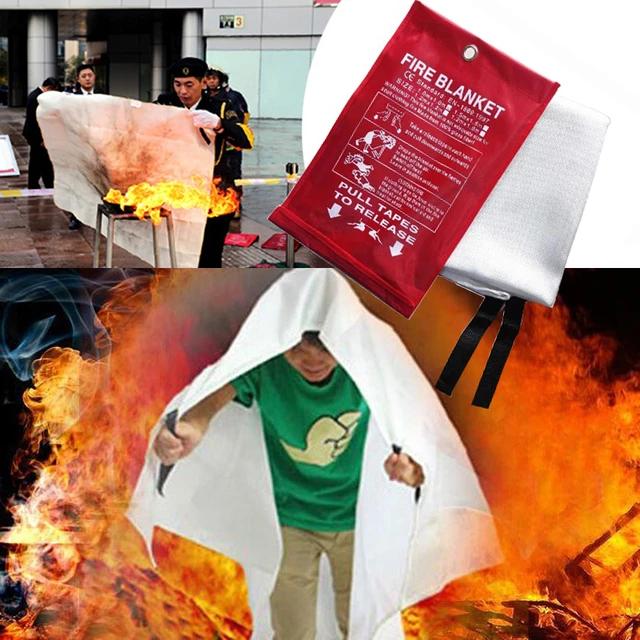
| Feature | Welding Blanket | Fire Blanket |
| Primary Purpose | Protect from welding sparks, spatter, and molten metal during industrial processes. | Extinguish small fires by smothering flames in emergency situations. |
| Typical Use | Industrial settings: welding, cutting, grinding, or working with high-heat equipment. | Emergency fire suppression: kitchen fires, small electrical fires, and personal clothing fires. |
| Material | Heavy-duty, flame-resistant materials like fiberglass, silica, vermiculite-coated fabrics, or carbon fiber. | Fire-resistant materials like fiberglass or Kevlar, designed for flexibility and quick deployment. |
| Heat Resistance | Can withstand extreme temperatures, often up to 1,000°F to 3,000°F (538°C to 1,649°C), depending on material. | Moderate heat resistance, typically between 900°F to 1,500°F (482°C to 815°C), designed for short-term exposure. |
| Design | Thick, durable, and heavy. Designed for prolonged use under high-heat conditions. | Lightweight and flexible for easy handling and quick use in emergencies. |
| Protection From | Sparks, molten metal, slag, and heat. | Small flames and fire by cutting off oxygen supply. |
| Typical Thickness | Available in various thicknesses, with thicker blankets offering greater protection in heavy-duty tasks. | Thin and compact, optimized for portability and rapid deployment. |
| Durability | Designed for repeated, long-term use in rugged environments. Often chemical-resistant and moisture-resistant. | Generally for single-use in emergencies. May degrade after use and needs replacement. |
| Portability | Typically heavier and may require tools like clamps or hooks to secure in place. | Lightweight, easily stored in a container for quick access during a fire emergency. |
| Common Scenarios | Used during welding, cutting, or metalworking to protect surfaces, equipment, or workers from sparks or hot materials. | Used to smother small household fires (e.g., kitchen oil fires) or wrap around a person to extinguish flames on clothing. |
| Cost | Higher cost due to industrial-grade materials and long-term use. | More affordable, especially for household use, typically designed for one-time emergency use. |
| Regulations & Standards | Often conforms to industrial safety standards like ANSI/FM 4950, categorized for specific heat or welding protection levels. | Must meet fire safety standards such as BS EN 1869:1997 in Europe or NFPA standards in the U.S. for household and commercial use. |
| Storage | Often rolled or folded and stored in workshops or industrial sites. Requires proper handling and maintenance. | Stored in a wall-mounted container or easily accessible pouch for immediate emergency use. |
| Common Industries | Welding, metal fabrication, construction, shipbuilding, and automotive industries. | Domestic kitchens, laboratories, small workshops, and offices. |
Welding Blankets: Specifically designed for industrial use, able to withstand extreme heat and provide protection from sparks and molten metal in processes like welding. They are heavy-duty, durable, and built for long-term use in environments that generate high heat.
Fire Blankets: Designed for emergency fire situations in homes or workplaces, primarily used to extinguish small fires or protect a person from flames. They are lightweight, compact, and intended for short-term use to smother fires.
The key difference lies in the intended application: welding blankets are for protection during high-heat industrial processes, while fire blankets are for emergency fire extinguishing.